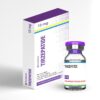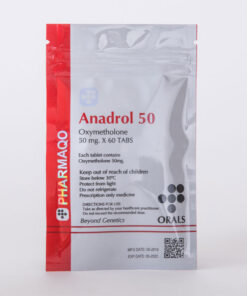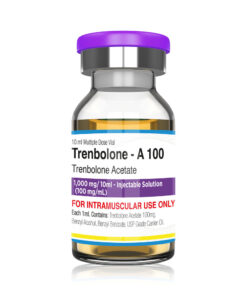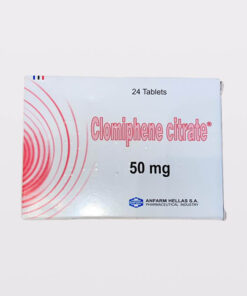Pharmaceutical Cefuroxime 250mg x 10
£9.99
Nocktum 250 mg x 10
Pharmaceutical Cefuroxime 250mg
Classification
- Active substance: Cefuroxime
- Form: 250mg x 10 tablets
- Active half-life: 1-2 hours
- Acne: Not associated
- Water retention: No
- Hbr: No
- Hepatotoxicity: Low
- Aromatization: No
Product Description for Cefuroxime 250mg
Pharmaceutical Cefuroxime 250mg x 10 tablets is a potent antibiotic designed to treat a wide range of bacterial infections. Cefuroxime is a second-generation cephalosporin antibiotic that works by inhibiting bacterial cell wall synthesis, leading to the death of the bacteria. It is highly effective against various gram-positive and gram-negative bacteria, making it suitable for treating infections such as respiratory tract infections, skin infections, urinary tract infections, and Lyme disease. Each tablet contains 250mg of Cefuroxime, ensuring a precise and consistent dosage. With its proven efficacy and safety profile, Cefuroxime is a reliable choice for combating bacterial infections and restoring health.
How Does Cefuroxime 250mg Work and Its Functions?
Cefuroxime 250mg works by inhibiting the synthesis of bacterial cell walls. It binds to specific penicillin-binding proteins (PBPs) located inside the bacterial cell wall, disrupting the construction of the cell wall and leading to cell lysis and death. This action effectively eliminates bacterial infection. Cefuroxime is stable in the presence of beta-lactamase enzymes, which are produced by some bacteria to resist antibiotics, making it effective against beta-lactamase-producing strains. Its broad-spectrum activity allows it to target a variety of bacteria, including those resistant to other antibiotics. This makes Cefuroxime a versatile and powerful tool in the treatment of bacterial infections.
The Suggested Dosage for Cefuroxime 250mg
The suggested dosage for Cefuroxime 250mg depends on the type and severity of the infection being treated. For most infections, the standard adult dosage is 250mg taken twice daily. For more severe infections, such as pneumonia or Lyme disease, the dosage may be increased to 500mg twice daily. It is essential to follow the prescribed dosage and complete the entire course of antibiotics to ensure the infection is fully eradicated and to prevent the development of antibiotic resistance. Always consult with a healthcare professional for the correct dosage and duration of treatment tailored to your specific condition.
What Are the Benefits of Taking Cefuroxime 250mg?
Taking Cefuroxime 250mg offers numerous benefits in the treatment of bacterial infections. Its broad-spectrum activity ensures effective treatment of a wide range of infections, from respiratory tract infections to skin and urinary tract infections. Cefuroxime’s stability against beta-lactamase enzymes allows it to treat resistant bacterial strains, providing an edge over other antibiotics. Patients often experience rapid relief from infection symptoms, leading to a quicker recovery and return to normal activities. The convenience of oral administration enhances patient compliance, and its well-established safety profile makes it a reliable choice for treating bacterial infections in various patient populations.
What Are the Effects & Precautions of Using Cefuroxime 250mg?
While Cefuroxime 250mg is generally safe and well-tolerated, it is important to be aware of potential side effects and precautions. Common side effects include gastrointestinal disturbances such as nausea, diarrhea, and abdominal pain. Allergic reactions, although rare, can occur and may present as rash, itching, or severe reactions like anaphylaxis. It is crucial to inform your healthcare provider of any known allergies to cephalosporins or penicillins before starting Cefuroxime. Long-term use may lead to the overgrowth of non-susceptible organisms, including fungi. Patients with renal impairment may require dosage adjustments. Regular monitoring and following the prescribed dosage regimen help minimize risks and ensure safe use.
Mechanism of Action of Cefuroxime
Cefuroxime’s mechanism of action involves inhibiting bacterial cell wall synthesis, a critical process for bacterial growth and survival. By binding to penicillin-binding proteins (PBPs), Cefuroxime disrupts the construction of the bacterial cell wall, leading to cell lysis and death. This bactericidal action makes it highly effective against a broad spectrum of bacteria, including both gram-positive and gram-negative strains. Cefuroxime’s resistance to beta-lactamase enzymes further enhances its efficacy, allowing it to target bacteria that produce these enzymes to evade antibiotic treatment. This dual action ensures robust treatment of various bacterial infections, making Cefuroxime a potent antibiotic choice.
Clinical Uses of Cefuroxime
Cefuroxime is clinically used to treat a wide range of bacterial infections. It is particularly effective in treating respiratory tract infections, including bronchitis, pneumonia, and sinusitis. Its efficacy extends to skin and soft tissue infections, urinary tract infections, and early-stage Lyme disease. In surgical settings, Cefuroxime is often used as a prophylactic antibiotic to prevent postoperative infections. Its broad-spectrum activity and stability against beta-lactamase enzymes make it suitable for treating infections caused by resistant bacterial strains. Cefuroxime’s versatility and reliability in clinical settings underscore its importance in the arsenal of antibiotic treatments.
Potential Side Effects of Cefuroxime
Potential side effects of Cefuroxime include gastrointestinal symptoms such as nausea, vomiting, and diarrhea, which are relatively common. Some patients may experience allergic reactions, ranging from mild rashes to severe anaphylactic reactions. It is essential to seek immediate medical attention if severe allergic symptoms occur. Other less common side effects include headache, dizziness, and changes in blood counts. Long-term use may result in the overgrowth of non-susceptible organisms, including fungi. Patients with renal impairment should use Cefuroxime with caution, and dosage adjustments may be necessary. Regular monitoring and adherence to the prescribed dosage help mitigate these risks and ensure safe treatment.
Cefuroxime for Respiratory Infections
Cefuroxime is highly effective in treating respiratory infections such as bronchitis, pneumonia, and sinusitis. Its broad-spectrum activity targets common respiratory pathogens, including Streptococcus pneumonia and Haemophilus influenzae. By inhibiting bacterial cell wall synthesis, Cefuroxime rapidly reduces the bacterial load, leading to the resolution of infection symptoms and recovery. Patients typically experience relief from cough, chest pain, and breathing difficulties within a few days of starting treatment. Cefuroxime’s stability against beta-lactamase enzymes further enhances its efficacy in treating resistant strains, making it a preferred choice for respiratory tract infections.
Cefuroxime in Skin Infection Treatment
Cefuroxime is an effective antibiotic for treating skin and soft tissue infections, including cellulitis, impetigo, and wound infections. Its broad-spectrum activity ensures effective eradication of common skin pathogens such as Staphylococcus aureus and Streptococcus pyogenes. By disrupting bacterial cell wall synthesis, Cefuroxime eliminates the infection, reducing inflammation, pain, and swelling associated with skin infections. Patients typically observe improvement in symptoms within a few days of starting treatment. Cefuroxime’s ability to combat beta-lactamase-producing bacteria makes it a reliable choice for treating resistant skin infections, ensuring rapid recovery and reduced risk of complications.
Patient Experiences with Cefuroxime
Patient experiences with Cefuroxime are generally positive, with many reporting rapid relief from infection symptoms and a quick return to normal activities. Patients appreciate the convenience of oral administration and the effectiveness of the antibiotic in treating a variety of infections. While some experience mild gastrointestinal side effects, these are typically manageable and subside as treatment progresses. Patients with a history of allergies to cephalosporins or penicillins should consult their healthcare provider before starting Cefuroxime. Overall, the effectiveness and safety profile of Cefuroxime makes it a preferred choice for many patients in treating bacterial infections.
How to Take Cefuroxime Effectively
Taking Cefuroxime effectively involves adhering to the prescribed dosage and administration guidelines. It is typically taken twice daily, with or without food, depending on individual tolerance. It is important to complete the full course of treatment, even if symptoms improve before the medication is finished, to ensure the infection is fully eradicated and to prevent the development of antibiotic resistance. Patients should avoid missing doses and take the medication at evenly spaced intervals to maintain consistent blood levels. Consulting with a healthcare provider for specific dosage instructions and following their recommendations ensures optimal efficacy and safety.
Comparing Cefuroxime with Other Antibiotics
When comparing Cefuroxime with other antibiotics, its broad-spectrum activity and stability against beta-lactamase enzymes stand out. Unlike penicillins, Cefuroxime is effective against beta-lactamase-producing bacteria, making it suitable for treating resistant strains. Its efficacy in treating a wide range of infections, from respiratory and urinary tract infections to skin and soft tissue infections, provides a versatile treatment option. Cefuroxime’s favorable safety profile, with low hepatotoxicity and no risk of water retention, further enhances its appeal. Compared to other cephalosporins, Cefuroxime offers a balance of efficacy, safety, and convenience, making it a preferred choice for many bacterial infections.
Long-term Use of Cefuroxime: What to Expect
Long-term use of Cefuroxime is generally not recommended due to the risk of developing antibiotic resistance and potential side effects. However, in cases where prolonged treatment is necessary, such as in chronic or recurrent infections, careful monitoring by a healthcare provider is essential. Patients may require regular assessments of kidney function and blood counts to detect any adverse effects early. Long-term use may also lead to the overgrowth of non-susceptible organisms, including fungi, requiring additional treatment.
Be the first to review “Pharmaceutical Cefuroxime 250mg x 10” Cancel reply
Related products
Injectable Steroids
Injectable Steroids
Oral Steroids
Injectable Steroids
Oral Steroids
Injectable Steroids
Human Growth Hormone
PCT Products














Reviews
There are no reviews yet.